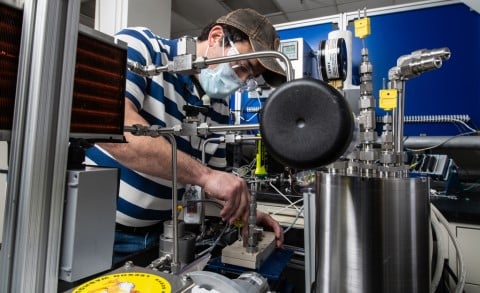New projects, innovations and collaborations!
National Renewable Energy Laboratory (NREL) researchers are revolutionising clean energy mobility beyond electric vehicles (EVs) by developing advanced power electronics systems that control the flow of electricity to propel large and advanced electric machines, such as those used in planes, trains, and heavy-duty transportation. They are developing innovative power electronics and electric motor packaging, semiconductor electro-thermal designs, and thermal management systems for transportation and manufacturing, among other things.

“It’s an exciting time to be working in power electronics,” said NREL Senior Researcher Sreekant Narumanchi. For reliability evaluation and failure analysis of innovative power electronics designs, NREL researchers rely on cutting-edge modelling and characterisation. Researchers can use advanced modelling capabilities to detect thermal bottlenecks and improve the performance of power electronics packaging. In addition, to better understand how stresses affect developing technologies, researchers use rigorous characterisation through heat, humidity, and vibration testing.
“Advanced cooling and thermal management systems optimize performance of electric vehicles and advanced machines,” Narumanchi said. “These systems help keep temperatures within operational limits, reduce the volume and weight of components, improve efficiency of components, and increase efficiency and range of the vehicle. Ultimately, these benefits contribute to reduced fuel consumption and greenhouse gas emissions.”
Moreover, the the U.S. Department of Energy’s Advanced Research Projects Agency-Energy (ARPA-E) has selected three new projects backed by NREL.
- Repurposing Infrastructure for Gravity Storage Using Underground Potential Energy
- Bringing Three-Dimensional Packaging and Thermal Management to Power Electronics
- Substation in a Cable for Adaptable, Low-Cost Electrical Distribution (SCALED)
“Each of these projects involve exciting new collaborations with industry and university partners—as well as collaborations across groups at NREL—to develop pioneering power modules, packages, converters, and drivetrain components impacting multiple energy efficiency and renewable energy applications,” Narumanchi said. “These important partnerships are enabling us to develop the most cutting-edge system designs to decrease costs, reduce component footprints, and improve overall performance, reliability, and efficiency.”








